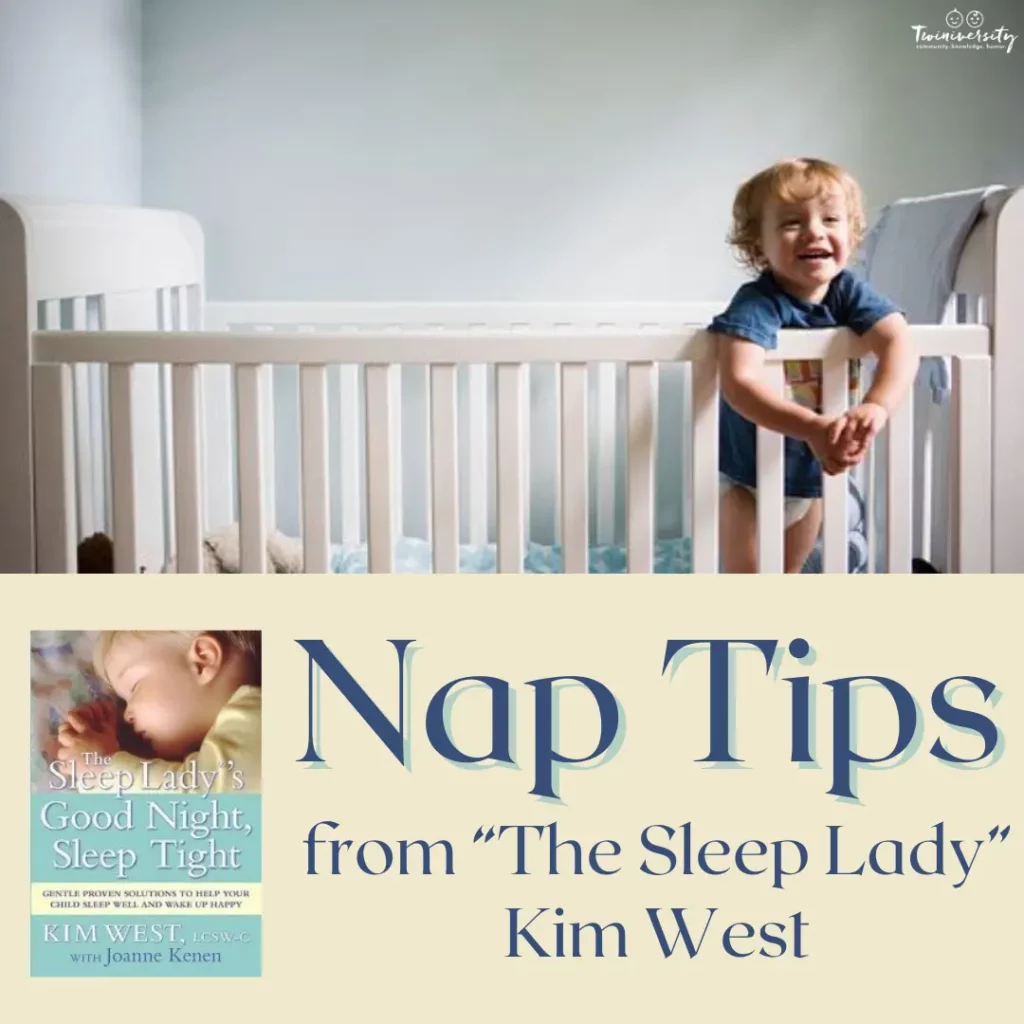Last updated on January 24th, 2024 at 06:25 pm

I often get asked about nap training. Mostly parents want to know if it’s possible, and if it is, how to make sure that their baby naps at the correct time and for the proper length of time. Naps are an essential part of both the baby and toddler sleep requirements. Naps allow little bodies to recharge and process the activities that have happened so far in their day. For some children, naps are a challenge, a daily struggle, and often frustrating for parents. So let’s get to the Nap Tips!
The good news? Naptime doesn’t need to be a source of frustration. You can help your baby sleep during the day so that you can have a happier time and spend less time dealing with tantrums (now, I’m not saying I can eliminate tantrums; those are a normal part of life with little ones, but we can certainly take preventative measures).

In order to make sure that your child is getting the most out of their daytime sleep, you need to understand your child’s minimum nap requirements. For the first six months, it’s important just to follow your baby’s sleep cues and help them get as much sleep as they need. Beyond six months, you can begin to follow a flexible schedule for their meals and naps, which can be accomplished with gentle nap coaching.
Try to Tackle Nighttime Sleep First
If your baby is not sleeping at night (or during naps), it’s okay to rely on your baby’s nap sleep crutch to ensure that your child gets enough naps at the right times of the day. How can you do that? I suggest that you continue to use the naptime sleep crutch and create a flexible schedule that includes your baby’s naptimes, so that your baby is getting quality daytime sleep while you are focused on night coaching.

If your naptime sleep crutch is no longer working (and it happens), then you will have to sleep coach both nights and naps at the same time.
You may be wondering why I urge parents to tackle nighttime sleep coaching before naps. There are a few reasons, the primary reason being that babies have an easier time falling to sleep in a completely dark, quiet room after their predictable bedtime routine. This doesn’t always happen with naps (we’ll talk about this in a bit).
Watch for Your Baby’s Sleepy Cues
For babies that are currently taking two naps each day, you’ll find that your baby is (most likely) displaying sleepy cues about two hours after they wake up, and again about three hours after that. These cues include eye rubbing, yawning, and acting distracted or disinterested (among others). For those of you with toddlers or preschoolers on one nap, you may notice that your child acts tired after lunch or about six hours after his initial wake-up time. Use these cues to help you find the times when your baby is ready for sleep.
Use an Abbreviated Bedtime Routine
Your baby is used to their bedtime routine. For example, if your routine is bath, fresh diaper, book, snuggles, in bed awake, then you can modify this routine for naptimes. A naptime routine may look something like this: fresh diaper, book, quick snuggle, in bed awake.
Ensure That Your Baby’s Room is Sleep-Inducing

Remember that you want your baby to recognize that it’s time to sleep. So, take a look at their sleep environment. Is there a lot of light coming in? Is the room a comfortable temperature? Is there a lot of traffic during naptimes?
Consider investing in blackout curtains if your baby’s room gets a lot of sun. To combat noise, a sound machine can help, or even just run a ceiling fan.
Nap At Home Whenever Possible
Your baby needs a consistent routine, and napping in her bed at home is the best way to help reinforce your nap coaching efforts.
From 52 Sleep Secrets for Babies: Napping “on the go” doesn’t work very well…. She needs a quiet, dimly lit environment in which to shut down and go to sleep-specifically, her own crib in her own room.
Plan outings and errands around nap time, or hire a sitter to stay with your sleeping baby if you must be out during her usual siestas.
Use Bedtime Rules
This means that if your baby stands up in her crib, you put her down once, and if it happens again, then ignore it.
From Good Night, Sleep Tight: Don’t feel obligated to feed her before every nap, particularly if you are working on breaking a food-sleep association. If you’ve been rocking or swinging her to bed, concentrate on phasing it out at naptime. Cut the rocking or swinging time in half at the beginning, and work on getting her down drowsy but awake.
Be Prepared to Modify The Shuffle

While you’re nap training, you may need to devote an entire hour (or two- one hour for the morning nap and one hour for the afternoon nap) to getting your baby to sleep.
If your child seems to be more alert with you in the room (some baby’s just won’t sleep if mom or dad is there. He might miss something!). If you feel that your presence is causing him to become agitated or overstimulated (or you have another child to take care of), consider leaving the room. You can come back to check on him often, somewhere between every five and fifteen minutes, based on your child’s reaction. Its ok to do this even if you are doing the Shuffle at night.
Use Dramatic Wake Up
If your baby refuses to fall asleep, it’s okay to leave the room for a full minute (time it on your watch), if this seems like too long, even 30 seconds is enough (count to 20) and come back with a dramatic wake up. You want to impress upon him that you are getting him up because it’s time, rather than because he’s been fussing.
If this happens, be sure to watch your baby for his sleepy cues, and try to get him down for his afternoon nap as soon as you start to see them, even if it’s earlier than normal.
Avoid Disaster Naps

A disaster nap is a nap that is less than 45 minutes in length. I refer to these shortened naps (or cat naps) as disaster naps because they are not a full sleep cycle. If you find that your baby is waking after only 20 or 30 minutes, you may be able to gently encourage her to go back to sleep with a small bit of reassurance.
Remember, naps are different than nighttime sleep, in that they change as your baby grows. If you find that your baby is taking more disaster naps than normal, consider modifying her nap schedule to help her get enough daytime sleep. This may mean moving naptimes around a bit, making the morning nap a bit later, or the afternoon nap a bit earlier. For some babies (especially those between six and eight months), a quick 45-minute late afternoon, or third nap, may be necessary.
Once you’ve started nap coaching, stick with it. Just like nighttime sleep, naps are something that your baby will gradually grow accustomed to. Remember to check his sleep environment and take into account other factors (such as turning off television for the hour before naps if you’re allowing screen time) to ensure that your baby has the best possibly naptime environment.
Another tip from my Workbook, 52 Sleep Secrets for Babies: “You can begin sleep coaching for naps when your healthy, full-term baby is six months old.”
Please note that naps are a huge topic, and while this article touches the surface, there is still a lot of details about naptime coaching that I just couldn’t fit into one article. For more in-depth details about nap coaching, please refer to my books Good Night, Sleep Tight and The Workbook, 52 Sleep Secrets for Babies.
 For more tips from Kim West, The Sleep Lady, buy her book, “The Sleep Lady’s Good Night, Sleep Tight“, available on Amazon.
For more tips from Kim West, The Sleep Lady, buy her book, “The Sleep Lady’s Good Night, Sleep Tight“, available on Amazon.

My name is Kim West, and I’m the mother of two beautiful girls, a Licensed Clinical Social Worker who has been a practicing child and family therapist for more than 21 years, and the creator of the original gentle, proven method to get a good night’s sleep for you and your child.
My sleep journey began when I started experimenting with gently shaping my daughter’s sleep by not following the conventional wisdom at the time. After having success (and then more success with my second daughter!), I began helping family and friends and my step-by-step method spread like wildfire, exactly like an excellent night of sleep for a tired parent should!








